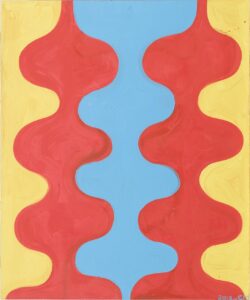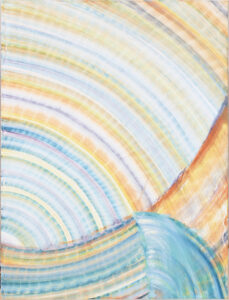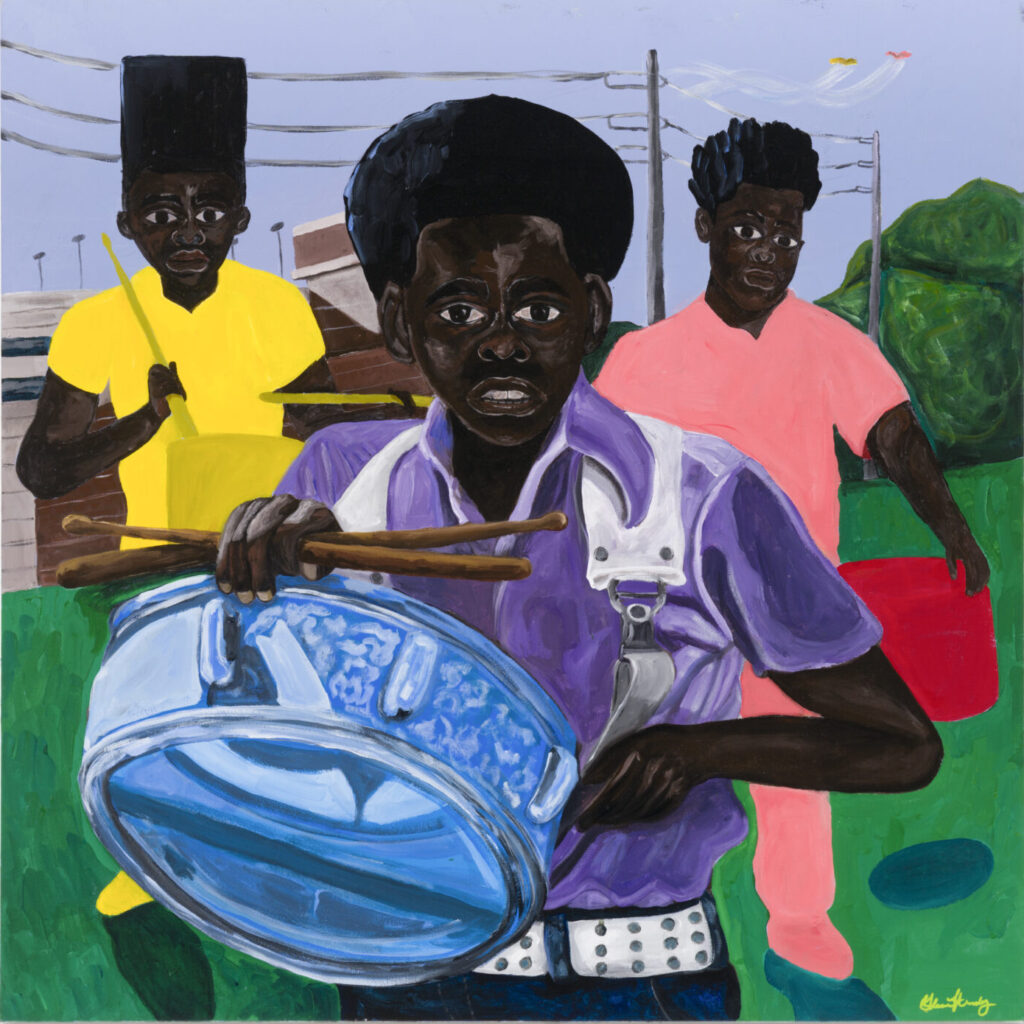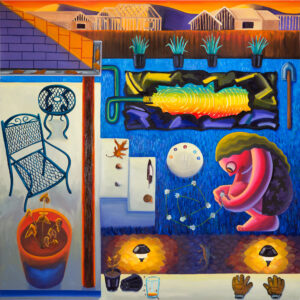We’re thrilled to announce a dynamic expansion to the Museum’s contemporary collection, featuring four distinctive artists whose work challenges, inspires, and enriches the conversation around art today.
“All of these artists are new to the collection,” says Elaine Mehalakes, the AAM’s vice president of curatorial affairs. “These exciting additions join other recently acquired works to tell a vibrant story about contemporary painting in America.”
The first two paintings below are currently on view in our American galleries. The other two will go on display in the future.
Chris Martin, Like Seven Inches from the Noonday Sun (2013)

Chris Martin (American, b. 1954), Like Seven Inches from the Noonday Sun, 2013, oil on canvas. Gift of the Weissman Family Collection, 2023.
Chris Martin is a key figure in contemporary American painting, and an importance influence on a generation of younger artists. His inspirations range from Picasso to the cosmos to musician James Brown and include children’s drawings and the art made by his students during the years when he worked as an art therapist. Like Seven Inches from the Noonday Sun features the pulsating peristaltic waves that are a recurrent motif in his work. Bright and energetic, paintings like this one are accessible and appealing but also serve as, in the artist’s words, “a machine to wake you up.”
Danielle Riede, Love in Orange (2022)

Danielle Riede (American, b. 1976), Love in Orange, 2022, oil with textured gesso on canvas. Gift of Danielle Riede, Courtesy Garvey|Simon NYC, 2023.
Riede lends her experience as a lifelong dancer to her painting, translating movement into gesture on her abstract canvases. Beginning with an intuitive movement off the canvas, such as the arc of an arm, she then records that same movement in paint. She is also inspired by nature’s motion: lava flowing, ocean waves rippling, rays of sunlight streaming.
Riede has developed a special technique to build up texture in works like this one, applying layers of gesso made from calcium carbonate, a material found in eggshells, limestone, and chalk that behaves much like plaster. The result suggests tidal motion beneath the surface.

Glenn Hardy Jr. (American, b. 1995) Drummer Boys, 2021, acrylic on canvas. Gift of the Rosenfeld Family, 2025. Photo © Yubo Dong
Glenn Hardy Jr., Drummer Boys (2021)
Glenn Hardy Jr., a self-taught artist from Maryland, joins the collection with Drummer Boys (2020–2021), first exhibited at the Felix Art Fair with Charlie James Gallery in Los Angeles. The acrylic painting features three boys poised with drumsticks, their vibrant clothing contrasting with expressions of uncertainty. Hardy explains, “It’s the physical expressions of Black men attempting to live their lives not knowing what could happen to them at any given moment.”
Hardy’s fluid brushwork and cool-toned palette—with punctuations of yellow, pink, and recurring green (a symbol of new beginnings)—emphasize both vulnerability and hope. Created early in his career, this piece reflects Hardy’s broader mission: to counter harmful stereotypes by portraying Black life with honesty, joy, and dignity. His work continues to build a visual archive of comfort, introspection, and triumph.
Natalie Wadlington, Backyard with Pond (2021)

Natalie Wadlington (American, born 1992), Backyard with Pond, 2021, oil on canvas. Gift of the Rosenfeld Family, 2025.
Natalie Wadlington, currently based in Brooklyn, blends influences from American regionalism, Latin American muralism, and Renaissance painting into a cubist style that explores psychological and environmental themes.
Her 2021 oil painting Backyard with Pond, created for her solo exhibition Pooled at Library Street Collective in Detroit, captures a fictional California neighborhood touched by nostalgia and ecological reflection. A childlike figure gathers natural objects near a man-made pond while the sepia-toned background hints at disappearing green spaces and humanity’s impulse to control nature.
Wadlington’s warm, sun-kissed palette and whimsical imagery evoke childhood wonder while subtly addressing the fragile balance between humans and their environments.

